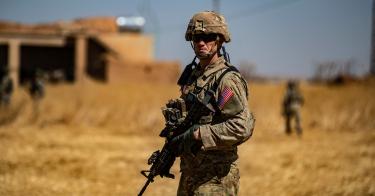Eighteen months ago, the Army embarked on an ambitious campaign to modernize its equipment, doctrine, organizations and training programs.
The shifts respond to the 2018 National Defense Strategy, which emphasizes being able to counter major military powers such as Russia and China. But adapting to a new paradigm is not easy.
The Army has a mixed history when it comes to transforming itself. It embarked on a major modernization effort in 1999 only to find itself forced off course as a result of the Sept. 11 terrorist attacks. In other cases, modernization campaigns were quickly derailed by steep funding cuts. If this latest effort is to succeed, it will require a combination of luck and steely focus that endures for the next decade.
First must come the deliberate reorientation of the entire 1.3 million person enterprise.
>>>Army Modernization: Navigating the Hurdles
Over the last 18 years, the Army completely transformed itself to perform exquisitely in counterinsurgency missions. It fielded new equipment, redesigned organizations and trained leaders in “small fights.” Hence, as just one example, the Army’s premier combat training center at Fort Irwin, California, transformed itself to replicate urban counterinsurgency scenarios, complete with actors portraying the populace.
To accommodate the new strategy, however, the Army must pivot to preparing for fights with major competitors. It is now fully engaged in that process, but it cannot be achieved overnight.
Second, many believe the Army has lost the ability to field major weapon systems. Indeed, from 2002 to 2014, nearly every major Army weapon system in development was canceled, some at extraordinary cost.
To be fair, some of these failures were not the Army’s fault; sometimes the money was pulled or circumstances changed. But in most cases, the Army bears some or most of the blame.
Regardless, as a consequence of these cancellations, most of the Army’s equipment in use today was designed in the 1970s and bought in the 1980s. Now, the Army must demonstrate it can once again bring big programs to fruition.
To that end, the Army fundamentally reorganized its processes for modernization, standing up a new major command, Army Futures Command, and subordinate teams, called Cross Functional Teams. The Army secretary, chief of staff and other senior leaders now routinely devote large amounts of time to the subject of modernization. That was, frankly, not the case in the past.
The Army has commissioned a new generation of equipment, ranging from precision missiles to individual weapons. But it will take steady, unblinking program management to deliver actual hardware into soldiers’ hands. The Army looked deep within its budget to find funding for this equipment; Congress has a big role to support these new programs.
Finally, the Army must change its talent-management methods to achieve success. All too often Army leaders are rotated too quickly, before they’ve had the chance to learn their job and become effective.
Further exacerbating the problem, Army senior leaders often are placed in roles for which they have no prior preparation and are expected to “figure it out.”
As examples, the last two commanders of Army Recruiting Command, good men both, had no prior recruiting or personnel experience before being assigned to the position. The Army’s director for force structure, a key position, is often rotated every year, with incoming leaders assigned with no experience.
To get outstanding outcomes, the Army must deliberately prepare leaders for the complex institutional assignments in which they will be responsible for managing change. Then, assuming they are achieving desired results, they must be left in position long enough to make a difference.
There is every reason to believe that the Army has learned from the past and is taking a deliberate and thoughtful approach toward adapting to the future. But the perils and pitfalls are real and will require continued attention from senior Army leaders and support from the Congress. America needs this effort to succeed.
This piece originally appeared in The Washington Times



